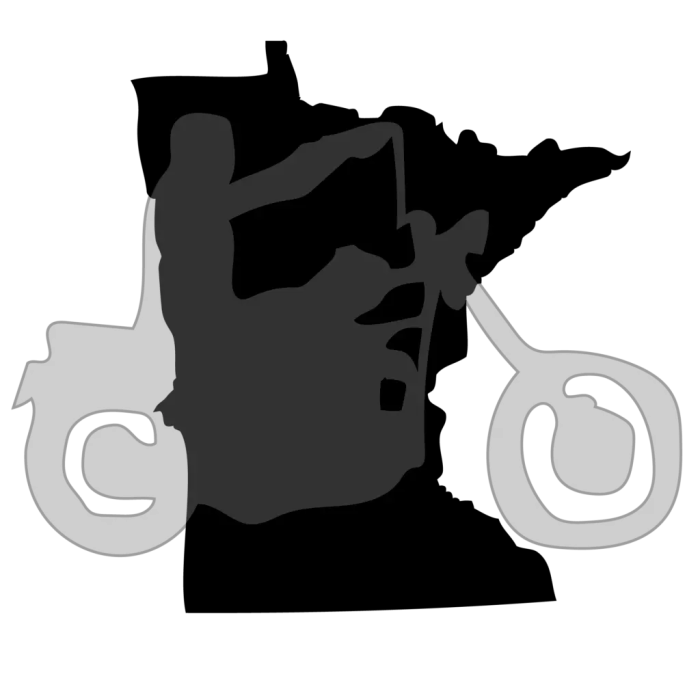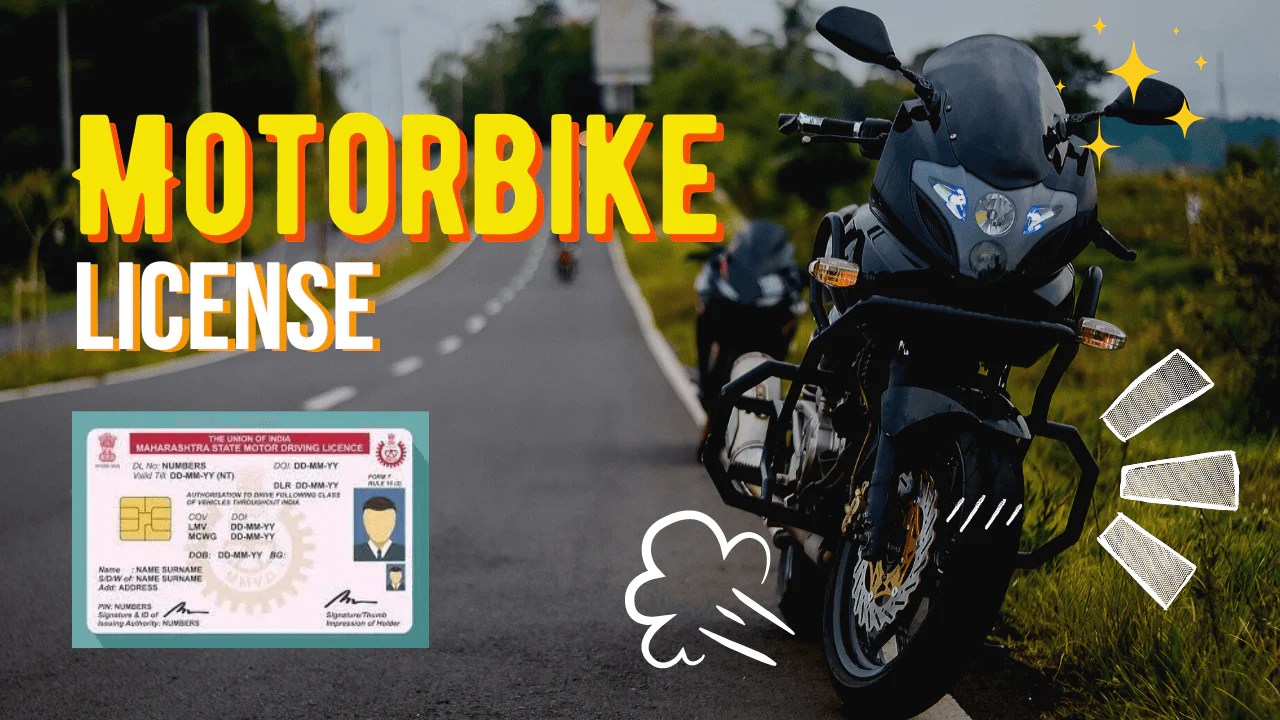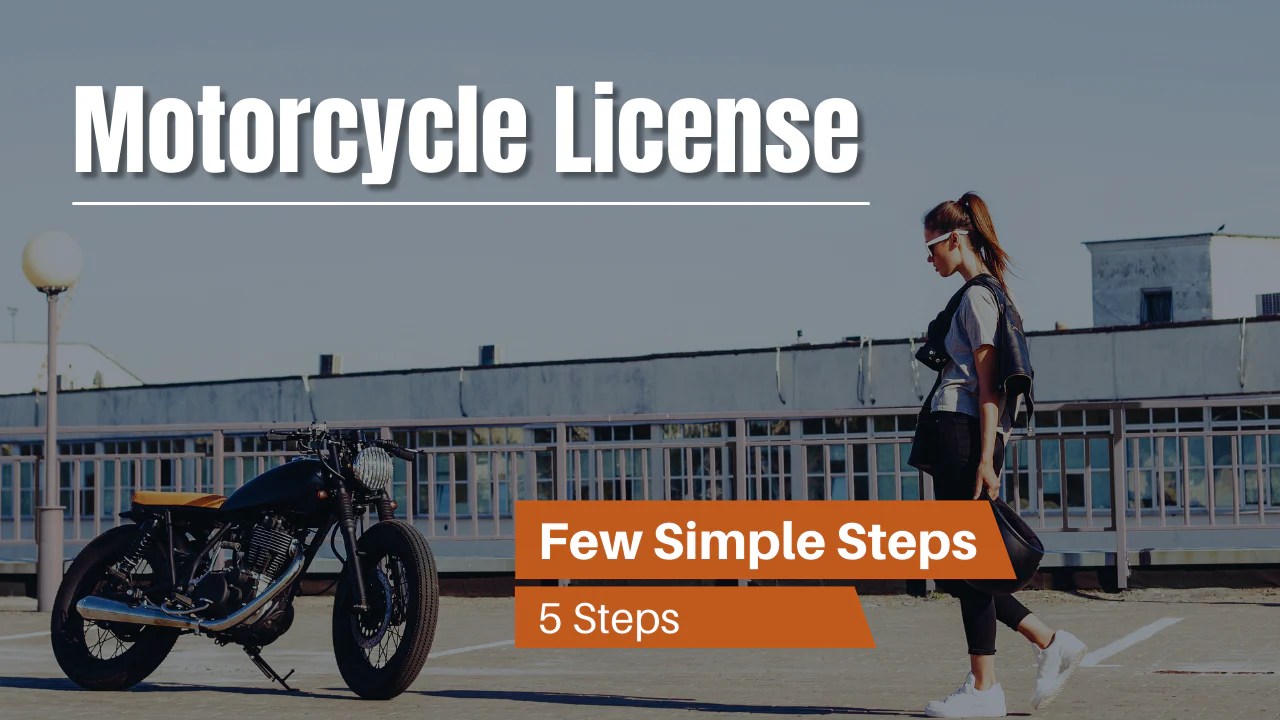How to get motorcycle license MN: A somber journey through the intricate process of obtaining a motorcycle license in Minnesota, a land of vast landscapes and even more complex bureaucratic hurdles.
This guide navigates the requirements, safety courses, application procedures, and tests necessary to earn your Minnesota motorcycle license. From the initial licensing requirements to the final, often nerve-wracking, tests, this comprehensive resource will walk you through each step, offering insights and practical advice. Prepare yourself for a winding path, but one that ultimately leads to the freedom of the open road.
Licensing Requirements in Minnesota
Navigating the intricate world of motorcycling often involves understanding the specific licensing requirements of each jurisdiction. Minnesota, like other states, has established a framework to ensure the safety and legal operation of motorcycles on its roads. This framework, detailed below, Artikels the necessary steps and criteria for obtaining a motorcycle license.The process of obtaining a motorcycle license in Minnesota requires careful adherence to specific guidelines and regulations.
Understanding these prerequisites, from age and residency to medical evaluations, is paramount to a smooth application and successful licensing. This comprehensive overview clarifies the necessary documentation and classifications, ultimately facilitating a safe and legally compliant experience for motorcycle enthusiasts.
Minimum Requirements
Minnesota’s licensing requirements establish baseline standards for motorcycle operators, safeguarding both the riders and other road users. These requirements ensure that individuals possess the necessary skills and knowledge to operate motorcycles safely. Age, residency, and specific medical conditions are considered to assess the applicant’s suitability.
| Requirement | Description | Supporting Documentation |
|---|---|---|
| Age | Applicants must be at least 16 years old to obtain a motorcycle learner’s permit and 18 years old to obtain a motorcycle license. | Proof of age, such as a birth certificate or passport. |
| Residency | Applicants must reside in Minnesota. Proof of residency is required. | Driver’s license, utility bill, lease agreement, or other documentation demonstrating Minnesota residency. |
| Medical Conditions | Individuals with certain medical conditions may need to provide additional documentation to demonstrate their ability to operate a motorcycle safely. This may include a medical examination or a statement from a physician. | Physician’s statement or medical examination report. |
Motorcycle License Classifications
Minnesota offers distinct classifications of motorcycle licenses, tailored to different experience levels and types of motorcycles. These classifications help organize the licensing system and streamline the process.
- Learner’s Permit: A learner’s permit is the first step in obtaining a motorcycle license. This permit allows the applicant to practice under the supervision of a licensed motorcycle operator. The permit period is usually a defined timeframe during which the applicant must successfully complete the required training and testing. This permits supervised riding for a specified time.
- Motorcycle License: Once the learner’s permit requirements are met, the applicant can progress to a full motorcycle license. This license permits independent operation of motorcycles, acknowledging the completion of the required training, testing, and other qualifications.
Documentation Needed
Obtaining a motorcycle license necessitates providing specific documentation. The process requires specific documentation, ensuring accurate identification and compliance with regulations.
- Application: Completing the official motorcycle license application form accurately and completely is essential. This form typically gathers personal information, contact details, and relevant details for the licensing process.
- Proof of Identity: Valid identification, such as a driver’s license or passport, is required. This helps establish the applicant’s identity and ensures the process’s integrity.
- Proof of Residency: Demonstrating residency in Minnesota through valid documents, such as a utility bill or lease agreement, is vital for verifying the applicant’s legal presence in the state.
- Medical Examination (if required): In cases of specific medical conditions, a medical examination may be necessary. This ensures the applicant’s ability to operate a motorcycle safely. The specific requirements are determined by the applicant’s medical history.
Motorcycle Safety Courses: How To Get Motorcycle License Mn
Motorcycle safety courses are crucial for minimizing accidents and fatalities on Minnesota’s roadways. Understanding safe riding techniques, recognizing potential hazards, and practicing defensive riding habits are vital for novice and experienced motorcyclists alike. These courses are more than just a requirement; they’re an investment in personal safety and a contribution to a safer riding environment for everyone.
Importance of Motorcycle Safety Courses in Minnesota
Minnesota, like many states, recognizes the significant role motorcycle safety courses play in reducing accidents and improving rider skills. These courses provide a structured environment to learn essential techniques and principles of safe motorcycling, potentially leading to fewer accidents and more responsible riding habits. Motorcyclists who complete a certified course often demonstrate a higher level of skill and awareness, leading to improved safety on the road.
Studies show a correlation between participation in motorcycle safety courses and reduced accident rates among new riders. A fundamental understanding of road conditions, weather patterns, and rider limitations is cultivated during these courses.
Motorcycle Safety Courses Offered in Minnesota
Various organizations and providers offer motorcycle safety courses in Minnesota. These courses cater to different needs and levels of experience. A comprehensive search online or through local dealerships and licensing agencies is recommended to find suitable courses.
- Minnesota Department of Public Safety (DPS): The DPS often hosts or approves courses. Information regarding specific course offerings, locations, and costs is available on their website. These courses are often standardized, ensuring consistent training quality.
- Motorcycle dealerships and training centers: Local dealerships and specialized training centers frequently provide safety courses. These courses often include hands-on training, which can enhance practical application of the learned techniques. The cost and specific course details should be checked directly with the provider.
- Private instructors: Certified private instructors might offer tailored courses, allowing for flexibility in scheduling and course content. However, verifying the instructor’s qualifications is crucial for quality assurance. Expect costs to vary based on the course duration and instructor experience.
Costs and Durations of Motorcycle Safety Courses
Course costs in Minnesota vary depending on the provider and the course content. Expect costs to range from a few hundred dollars to a couple of hundred dollars, including the licensing fees. The duration of courses can range from a half-day to a full day, or even multiple days, depending on the course’s depth. This variation reflects the differing needs of new and experienced riders.
Benefits of Completing a Motorcycle Safety Course
Completion of a motorcycle safety course can positively impact a rider’s experience and licensing status. Successful completion often leads to a reduction in insurance premiums for riders with clean records. Furthermore, courses often cover advanced topics and techniques, providing an advantage for experienced riders.
Comparison of Motorcycle Safety Courses
| Provider | Cost (approx.) | Duration | Curriculum Highlights |
|---|---|---|---|
| Minnesota DPS | $150 – $250 | 1 day | Fundamental riding skills, hazard recognition, and defensive riding techniques. |
| Local Dealership | $200 – $350 | 1-2 days | Hands-on training, advanced maneuvers, and maintenance tips. |
| Private Instructor | $300 – $500+ | Variable | Tailored instruction based on rider’s experience and goals. |
Course curricula often incorporate practical exercises and simulations to prepare riders for various road conditions and potential hazards.
Applying for a Motorcycle License
Embarking on the journey to obtaining a motorcycle license in Minnesota involves a structured process, ensuring both your safety and the safety of others on the road. This meticulous procedure is designed to assess your preparedness and competency, ultimately leading to a safer and more responsible motorcycling experience.Navigating the application process might seem daunting, but this guide will meticulously detail each step, providing clarity and a roadmap to success.
Understanding the required documents, fees, and testing procedures will streamline the process and equip you with the knowledge to confidently apply.
Application Procedure Overview
The Minnesota Department of Public Safety (DPS) manages the licensing process. A comprehensive understanding of the steps involved is crucial for a smooth and efficient application. A well-defined procedure, coupled with meticulous attention to detail, will lead to a successful application.
Required Documents and Forms
To initiate the application process, gather the necessary documentation. This includes proof of identity, such as a valid driver’s license or state-issued identification card. Proof of residency, like a utility bill or lease agreement, is also required. Furthermore, a completed application form, obtained from the DPS website or a designated DMV office, is essential. The form will require personal information, contact details, and details about your prior driving history.
Fees and Payment
The Minnesota DPS charges fees for processing motorcycle license applications. These fees are designed to cover administrative costs and maintain the efficiency of the system. Payment methods, including online payment or in-person payment at designated locations, are detailed on the DPS website.
Scheduling and Taking Tests
Scheduling the required tests, including the knowledge test and the skills test, is an integral part of the application process. The DPS website or designated DMV offices offer online scheduling systems. The knowledge test assesses your understanding of Minnesota’s motor vehicle laws and regulations. The skills test evaluates your practical riding abilities and safe maneuvering techniques. Candidates should adhere to the established procedures and protocols for scheduling and taking the tests.
Flowchart of Application Process
This flowchart visually depicts the sequential steps involved in obtaining a Minnesota motorcycle license. It starts with gathering the required documents and ends with receiving your motorcycle license. The process involves filling out forms, paying fees, scheduling tests, and ultimately, passing the tests to receive the license.
| Step | Description |
|---|---|
| 1 | Gather required documents (proof of identity, residency, etc.). |
| 2 | Complete the motorcycle license application form. |
| 3 | Pay the required application fees. |
| 4 | Schedule the knowledge test and skills test. |
| 5 | Take and pass the knowledge test. |
| 6 | Take and pass the skills test. |
| 7 | Receive your Minnesota motorcycle license. |
Motorcycle License Tests
Navigating the complexities of obtaining a motorcycle license in Minnesota requires a comprehensive understanding of the required tests. This section delves into the specifics of the written and practical examinations, offering insights into potential questions, passing scores, and preparation strategies. Success in these tests is crucial for safe and legal operation on Minnesota roads.The Minnesota Department of Public Safety (DPS) administers motorcycle licensing tests to ensure prospective riders possess the necessary knowledge and skills for safe operation.
These tests assess not only theoretical understanding but also practical application of that knowledge in a controlled environment. The rigorous testing process helps protect road users and maintain the safety standards of the state.
Written Test
The written test evaluates a candidate’s foundational knowledge of Minnesota motorcycle laws, safe riding practices, and potential hazards. Understanding these elements is vital for responsible riding. A strong grasp of these concepts will increase the chances of passing.
- The written test encompasses a range of topics, including traffic laws, signaling, lane position, and hazard recognition. Candidates must demonstrate an understanding of common traffic scenarios and their implications for safe riding practices.
- Examples of questions might include: “What is the proper signaling procedure for a lane change on a motorcycle?” or “Describe the best approach to handling a sudden obstacle on the road.” Accurate responses to these and similar questions are key to success.
- The passing score for the written test is typically 80%. Achieving this score indicates a sufficient understanding of the subject matter.
- Thorough study of official Minnesota Department of Public Safety materials, motorcycle handbooks, and practice tests is essential for effective preparation. This strategy can help solidify understanding of critical concepts and procedures.
Practical Test
The practical test assesses the applicant’s ability to safely operate a motorcycle in a controlled environment. The test is designed to ensure candidates can apply their theoretical knowledge in a practical setting.
- The practical test involves various maneuvers, including straight-line riding, turns, lane changes, and emergency stops. Demonstrating proficiency in these areas is crucial for success.
- Example maneuvers might include a series of turns at varying speeds and distances, followed by a lane-change exercise in a specific environment. Correct execution of these actions is key to passing the practical test.
- Passing scores for the practical test are usually determined by a certified evaluator. Evaluation criteria are based on the applicant’s adherence to safety protocols and smooth execution of required maneuvers.
- Practice is essential for improving proficiency in various maneuvers. Regular practice in a safe environment, under supervision, is highly recommended. Experienced riders can offer valuable guidance and insights.
Test Topics
| Topic | Example Question | Answer |
|---|---|---|
| Traffic Laws | What is the legal passing distance between two vehicles? | A minimum of 3 feet is required. |
| Lane Positioning | Describe the proper lane positioning for a motorcycle. | Maintain a safe distance from other vehicles, and position in a lane that allows for safe maneuvering. |
| Signaling | How should a motorcycle rider signal a turn? | Use the appropriate turn signal, clearly indicating the intended direction. |
| Hazard Recognition | Describe the proper response to a sudden hazard on the road. | Maintain control of the motorcycle, decelerate gradually, and take evasive action if necessary. |
Motorcycle Insurance

The open road beckons, but with it comes a unique set of responsibilities. A motorcycle, while offering exhilarating freedom, presents a higher risk of accident compared to a car. This necessitates careful consideration of insurance, a crucial element in safeguarding your financial well-being and ensuring the safety of others.Minnesota, like many states, mandates minimum liability insurance coverage for all motor vehicles, including motorcycles.
However, this minimum coverage often falls short of adequately protecting riders and their assets in the event of an accident. Understanding the various insurance options, provider comparisons, and factors affecting rates empowers riders to make informed decisions that align with their individual needs and financial circumstances.
Importance of Motorcycle Insurance in Minnesota
Minnesota’s mandatory insurance requirements, while legally binding, are not sufficient to cover potential damages. Accidents, even minor ones, can lead to substantial medical expenses and repair costs. Without adequate insurance, riders face the financial burden of these expenses, potentially impacting their livelihood and future plans. The protection provided by insurance safeguards both the rider and other parties involved in an accident.
Insurance Options Available for Motorcycle Riders
Various insurance options cater to diverse rider needs. These include basic liability coverage, which only compensates others in case of an accident, and comprehensive coverage, which extends to protecting the motorcycle itself from damage or theft, and paying for the rider’s medical expenses. Collision coverage protects the motorcycle in the event of an accident with another vehicle or object, and medical payments coverage covers the rider’s medical bills regardless of fault.
Understanding the nuances of each option is vital in selecting the right plan.
Comparison of Different Insurance Providers and Policies
Insurance providers in Minnesota offer a wide range of policies with varying premiums and benefits. Factors like the rider’s experience, the type of motorcycle, and the location of riding can significantly influence the premium amount. Comparative analysis of policies across different providers helps riders identify the most suitable plan. Some providers may offer discounts for safety courses or good driving records.
Carefully reviewing policy details, such as coverage limits and exclusions, is essential.
Insurance Rates Based on Experience and Motorcycle Type
Insurance premiums are often correlated to the rider’s experience and the type of motorcycle. New riders or those with a history of accidents tend to have higher premiums compared to experienced riders. Similarly, larger and more powerful motorcycles, often associated with higher speeds and potential risks, frequently come with higher premiums. Factors like the motorcycle’s engine size and horsepower, as well as its perceived risk of theft, also play a role.
Minimum Insurance Requirements for Motorcycle Riders in Minnesota, How to get motorcycle license mn
Minnesota’s minimum insurance requirements for motorcycle riders encompass liability coverage. These requirements, though legally mandated, are typically inadequate to fully protect riders in the event of a serious accident. Comprehensive and collision coverage are recommended to offer a higher level of financial protection and ensure a more secure riding experience. It’s crucial to consult with an insurance agent to understand the full spectrum of coverage options and their implications.
Motorcycle Licensing Resources
Navigating the complexities of obtaining a motorcycle license in Minnesota can feel overwhelming. Fortunately, numerous resources are available to guide you through the process, ensuring a smooth and successful journey toward safe and legal operation on two wheels. Understanding these resources empowers you to make informed decisions, fostering a deeper comprehension of the requirements and procedures involved.This section provides a comprehensive overview of reputable websites and government agencies, crucial contact information, and frequently asked questions, equipping you with the necessary tools for a successful motorcycle licensing experience.
Reputable Websites and Government Agencies
Minnesota’s Department of Public Safety (DPS) is the primary source for motorcycle licensing information. Their website provides detailed information on the licensing process, including application forms, testing schedules, and required documents. Complementary resources from the Minnesota Motorcycle Safety Program and the Minnesota Department of Transportation (MnDOT) further clarify the requirements and offer valuable safety tips. These sites provide the essential knowledge for successfully navigating the licensing process.
Contact Information for Relevant Departments
Precise and accessible contact information is essential for promptly addressing inquiries and resolving any potential issues. The Minnesota Department of Public Safety (DPS) provides crucial contact information, including phone numbers, email addresses, and physical addresses for various offices handling motorcycle licensing. Similarly, the Minnesota Motorcycle Safety Program and MnDOT offer contact details for inquiries related to their respective services.
Contact Information for Motorcycle Safety Course Providers
Finding a suitable motorcycle safety course is critical for gaining the skills and knowledge needed to operate a motorcycle safely and confidently. Numerous providers across Minnesota offer courses tailored to meet the licensing requirements. Each provider typically maintains a website with contact information, including phone numbers, email addresses, and registration details. Directly contacting these providers ensures that you select a course aligned with your needs and schedule.
Frequently Asked Questions
This section addresses common queries about motorcycle licensing in Minnesota.
- What documents are required for a Minnesota motorcycle license application? The application process necessitates specific documents, including a valid driver’s license, proof of identity, and evidence of completion of a motorcycle safety course, if required. Failure to submit these documents can result in delays or rejection of the application.
- What are the fees associated with obtaining a Minnesota motorcycle license? Fees for motorcycle licensing vary and are subject to change. Review the current fee schedule on the Minnesota Department of Public Safety (DPS) website for the most up-to-date information.
- How long does the motorcycle licensing process typically take? The timeframe for obtaining a motorcycle license in Minnesota hinges on several factors, including the availability of testing slots, the submission of necessary documents, and any potential delays in processing. Accurate timelines can be found on the Minnesota Department of Public Safety website.
- Are there any specific requirements for motorcycle riders under the age of 18? Minors typically have additional requirements to obtain a motorcycle license, including parental consent or specific training protocols. Review the DPS website for detailed information.
- Can I apply for a motorcycle license online? Some states provide online application options. Check the Minnesota Department of Public Safety website for information on online applications and procedures.
Alternatives and Considerations

Navigating the complexities of obtaining a Minnesota motorcycle license involves exploring various avenues and understanding potential caveats. Beyond the standard application process, alternative methods and considerations for specific rider profiles and motorcycle types exist. This section delves into these nuanced aspects, providing a comprehensive understanding of the entire licensing landscape in Minnesota.
Transferring a License from Another State
Minnesota recognizes motorcycle licenses issued by other U.S. states. This process, known as “licensing reciprocity,” streamlines the process for experienced riders relocating to the state. Documentation requirements and the specific criteria for reciprocal licensing vary depending on the originating state’s regulations. Thorough research and adherence to Minnesota’s specific procedures are crucial to avoid delays or complications.
Restrictions and Limitations for Specific Riders and Motorcycle Types
Certain riders or motorcycle types may encounter specific restrictions or limitations under Minnesota’s licensing framework. For example, riders with vision impairments might face additional requirements for visual acuity tests. Similarly, motorcycles classified as high-performance or modified models may necessitate specific licensing requirements or additional safety measures. These regulations are implemented to balance safety and accessibility.
Renewing a Motorcycle License in Minnesota
The process for renewing a Minnesota motorcycle license mirrors the procedure for initial issuance, with certain prerequisites. Drivers must ensure their driving record remains clean and meet the established renewal criteria. This proactive approach ensures compliance with state regulations and facilitates uninterrupted operation of a motorcycle.
Implications of Non-Compliance with Licensing Requirements
Failure to comply with Minnesota’s motorcycle licensing requirements can have significant implications. These include potential penalties, the revocation of the motorcycle license, and legal ramifications. Non-compliance with licensing stipulations can impede participation in safe and responsible motorcycling activities.
Penalties for Driving Without a Valid Motorcycle License
Driving a motorcycle without a valid Minnesota license carries substantial penalties. These penalties can range from fines to potential suspension or revocation of driving privileges. The severity of the penalties can be substantial and potentially involve legal ramifications. These consequences emphasize the importance of adhering to the state’s licensing procedures.
Last Point
In conclusion, obtaining a motorcycle license in Minnesota requires meticulous attention to detail and a commitment to safety. This guide provides a roadmap, but the actual journey will be shaped by your dedication and understanding of the rules and regulations. Remember, the open road awaits, but it demands respect and preparedness. May your ride be safe and fulfilling.
Top FAQs
What is the minimum age to get a motorcycle license in Minnesota?
The minimum age requirement for a motorcycle license in Minnesota is 16 years old.
What documents are needed to apply for a motorcycle license?
Required documents typically include a valid driver’s license, proof of residency, and any necessary medical certificates.
Are there specific medical requirements for obtaining a motorcycle license?
Yes, specific medical conditions might require additional documentation or restrictions. Check the Minnesota Department of Public Safety website for detailed information.
How long does the motorcycle license application process usually take?
The processing time for a motorcycle license application can vary depending on the completeness of the application and any potential delays.
 Nimila
Nimila



